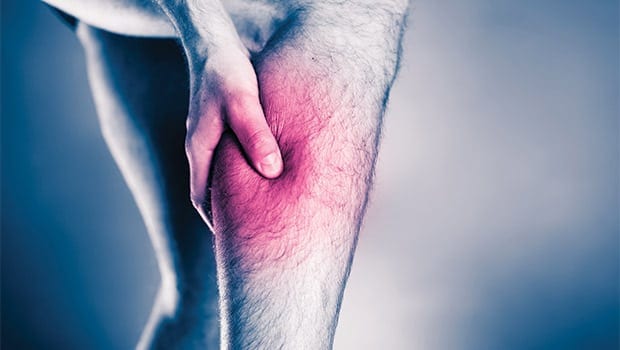
Nowadays the word “pad” brings to mind a tablet or notebook or some other electronic device. But to the medical community, it means peripheral arterial disease, a blockage of arteries in the limbs and organs.
It is well known that atherosclerosis, or plaque, can block arteries in the heart and brain, resulting in a heart attack or a stroke. However, cholesterol, the chief component of plaque, shows no favoritism. It exists in other arteries, including those of the arms and legs.
Symptoms of PAD
- Painful cramping in hip, thigh or calf muscles after physical activities
- Leg numbness or weakness
- Sores or wounds on the toes, feet, or legs that won’t heal
- Shiny skin on the legs
- Change in color of the skin of legs
- A lower temperature of one leg compared to the other leg
- Slower growth of toenails and slower hair growth on feet and legs
- Erectile dysfunction, especially among men who have diabetes
Most often PAD refers to cholesterol buildup in the arteries supplying the legs.
Many people have not heard of the condition. They attribute its symptoms to old age, arthritis or being out of shape. That’s understandable. The symptoms are tricky. Further confusing the situation is that the symptoms come and go. Most often people experience claudication, or pain in the calves or thighs during an activity, such as walking. After a short rest, however, the pain subsides only to return when the walk continues.
That’s because walking requires a greater flow of oxygen-bearing blood to the extremities. Oxygen provides energy, the fuel for all physical activity. Pain ensues if a blockage prevents an adequate supply of blood to the muscles. The demand for oxygen — and the pain — decrease with rest.
Claudication is characterized by its consistency. If you can make it only two blocks without pain on Monday, chances are you can make it only two blocks without pain on Tuesday. In some situations, the pain can become so incapacitating that it severely impacts one’s functional activities.
As the disease progresses, symptoms can include leg numbness or weakness, sores on the foot or leg that fail to heal and change in skin color or temperature of the leg. Men may experience erectile dysfunction.
High cholesterol is the leading cause of PAD, but diabetes, high blood pressure, obesity and smoking all add to the problem.
PAD is common. The American Heart Association estimates that 13 million people in this country are afflicted. It is more common in blacks and people over the age of 70. Yet, it often goes undiagnosed. Initially, it is painless. The first sign that the problem even exists is often the lack of pulses in the leg, but an examination of these pulses is not a common part of a physical examination.
In addition, some elderly people or those with chronic illnesses tend to be more sedentary. They don’t engage in a physical activity that elicits claudication.
Fortunately, there is reliable testing for the disorder. A physical exam will detect the lack of pulses in the foot. Ultrasounds will check for blood flow, and an angiogram — injection of dye into the artery — will find the blockage. A common but simple test is the ankle-brachial index in which the blood pressure of the artery in the ankle is compared to that in the arm. Readings of less than 1.0 indicate narrowing of the arteries in the leg.
It is sometimes possible to manage the symptoms and stop the progression of the disease by following a healthy lifestyle and taking medications to control cholesterol, blood pressure and glucose. A daily aspirin is often recommended to prevent clots.
Other situations require a more aggressive approach, which mirrors that of treatment of heart disease. Angioplasties to open the arteries, or bypass surgery to build a blood supply around the blockage are common procedures.
PAD cannot be ignored. It is a sign that cholesterol is also building up elsewhere, which increases the risk of a heart attack or stroke, concluded the National Heart, Lung, and Blood Institute. Blockages in the artery feeding the kidney can cause kidney failure. In severe cases, when medicine and surgical interventions are insufficient, amputation is required.
But there is good news. Researchers from the Harvard T.H. Chan School of Public Health studied the impact of certain risk factors on the incidence of PAD. They followed 45,000 male health professionals for 25 years and found that four risk factors — high cholesterol, smoking, diabetes and high blood pressure — were the major culprits behind PAD.
Having just one of these factors doubled the risk, and men with all four were 16 times more likely to be afflicted. Of the men ultimately diagnosed with PAD, 96 percent had one or more of the conditions. Time was also a factor. The longer the man smoked or had diabetes or high cholesterol, the higher the risking of developing PAD.
These results suggest that PAD can be prevented. Lifestyle changes to prevent the four risk factors or adherence to a medication regime can reduce the risk of not only PAD, but also stroke and heart disease.








